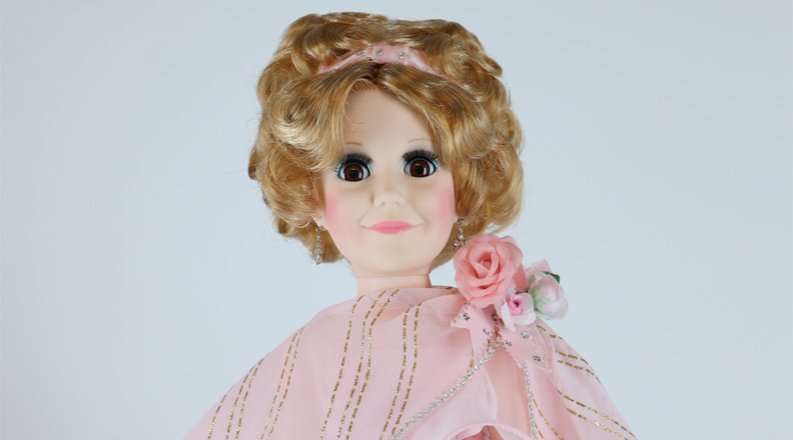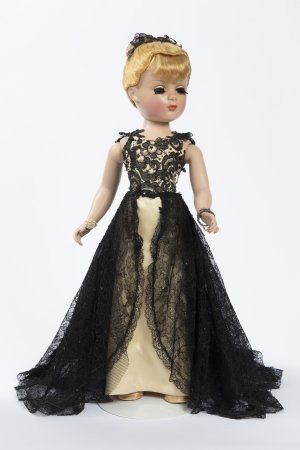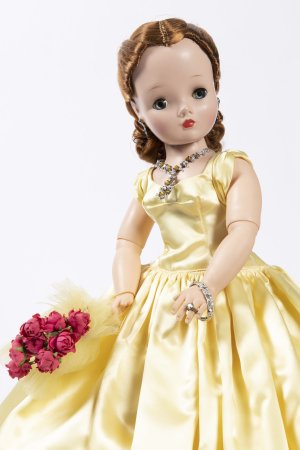Plastic, Satin, Lace, Tulle, and Rhinestones.
Barry Art Museum, Norfolk, VA. Gift of Carolyn K. and Richard F. Barry III
Photo credit: Patrick Cagney, 2021
By Jonah Grinkewitz
Barbie may be taking center stage this summer thanks to a new feature film, but did you know she was not the first American fashion doll introduced to the public?
That would be Madame Alexander’s Cissy, just one of the dolls that will be on view at Old Dominion University’s Barry Art Museum starting Aug. 29.
“Fashioning Innovation: Madame Alexander at 100,” running through Dec. 31, will honor Madame Beatrice Alexander’s centenary with a showcase of doll fashion evolution.
Madame Beatrice Alexander (1895-1990), founder of the Madame Alexander Doll Company, is recognized as a trailblazer in the American doll industry. Thirty-six years before Mattel’s Barbie, Alexander introduced ideas and materials that would become standard in doll manufacture, including developing dolls based on licensed characters, using plastic as her primary construction material and debuting a curvy, or full-figured, fashion doll.
This exhibition considers Alexander’s significant legacy, from her sophistication as a fashion designer to her business acumen, within the world of doll design.
Critics initially decried her full-figured body as inappropriate for children, but she became popular with consumers, remained in production until 1962 and set a precedent for future fashion dolls from Barbie to Bratz.
Plastic, Satin, Lace, Tulle, Topaz, and Rhinestones
Barry Art Museum, Norfolk, VA. Gift of Carolyn K. and Richard F. Barry III
Photo credit: Patrick Cagney, 2021
Also on display will be Alexander’s exquisitely crafted, French-inspired doll fashions. Taking advantage of New York’s cultural resources, she regularly conducted research at the New York Public Library to ensure historical accuracy in her designs. She also frequented shops along Seventh Avenue to obtain high-quality materials, observe the latest developments in fashion and work with designers.
In 1951, the New York Fashion Academy recognized her contributions to American fashion with a medal, an honor she would win for the next three years.
The exhibition will showcase the evolution of Alexander’s doll-making from porcelain to the current industry-standard plastic and take viewers through a visual timeline of her childhood in Manhattan’s Lower East Side during World War I.
The Barry Art Museum will set the stage for viewers to immerse themselves in the cultural climate of Alexander’s era. A Jewish woman in a male-dominated field of doll production and entrepreneurship, Alexander fought to overcome social and financial challenges.
This exhibition connects Alexander’s innovations in culture and fashion with her passion for dolls as a means of introducing their young owners to the larger world. “Dolls should contribute to a child’s understanding of people, other times and other places,” Alexander said. “Love is in the details.”
This exhibit is free and open to the public. The Barry Art Museum is at 1075 W. 43rd St., Norfolk. For complete exhibition details, visit https://barryartmuseum.odu.edu/visit/#free-admission.





